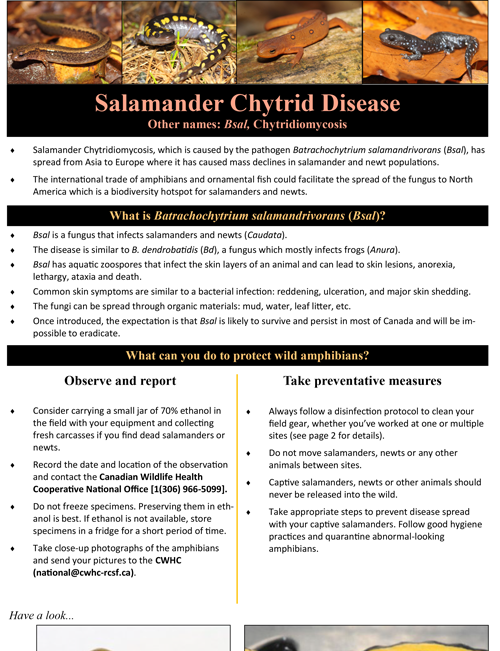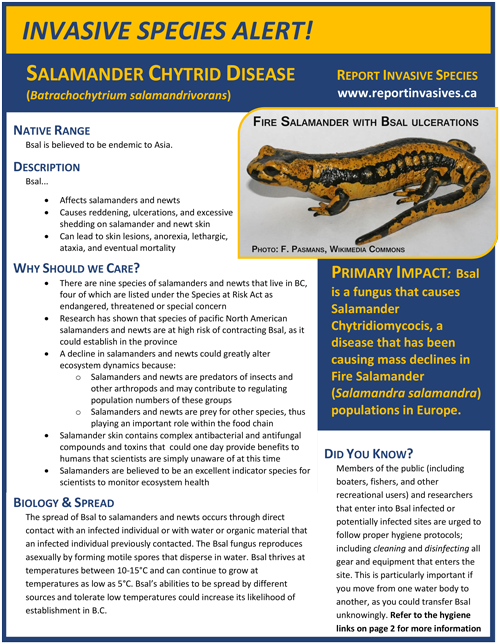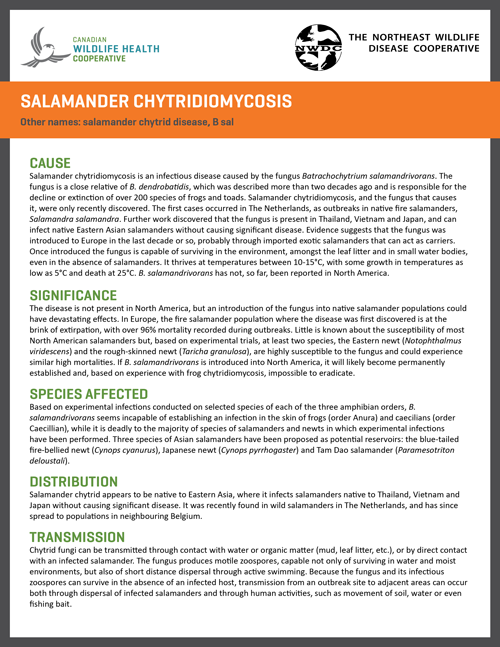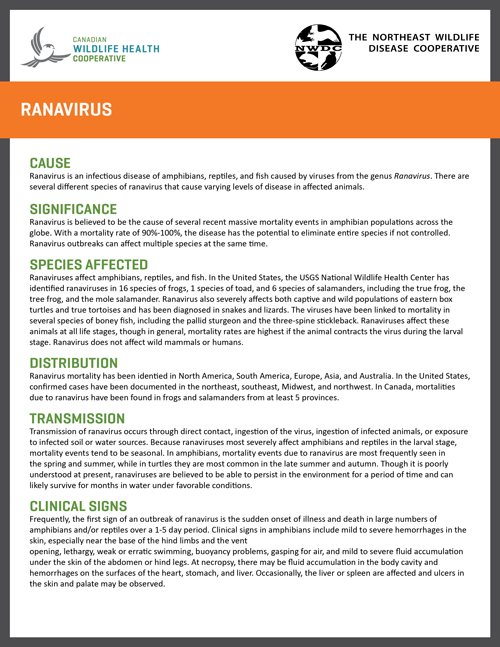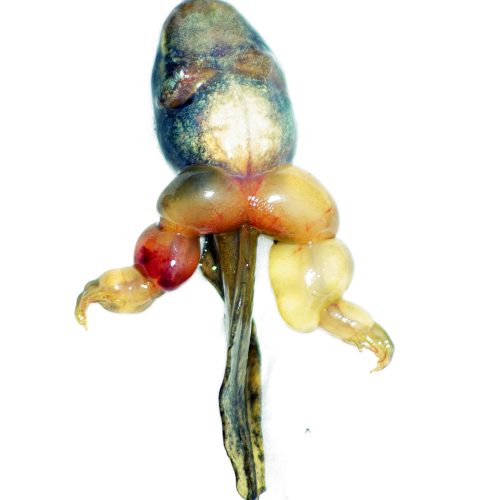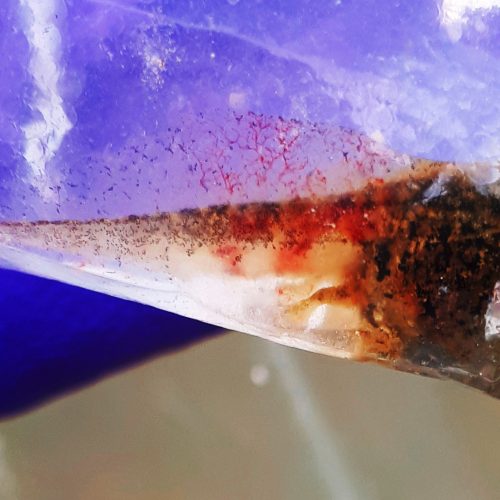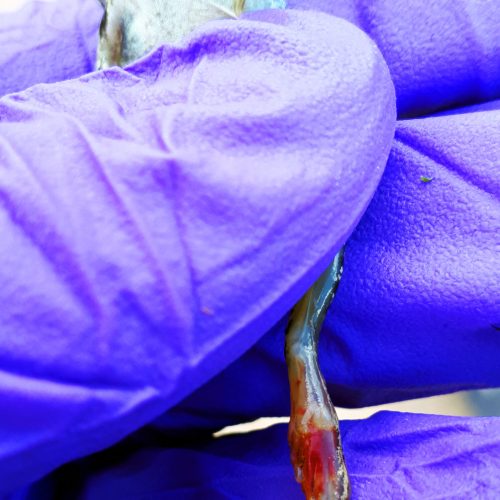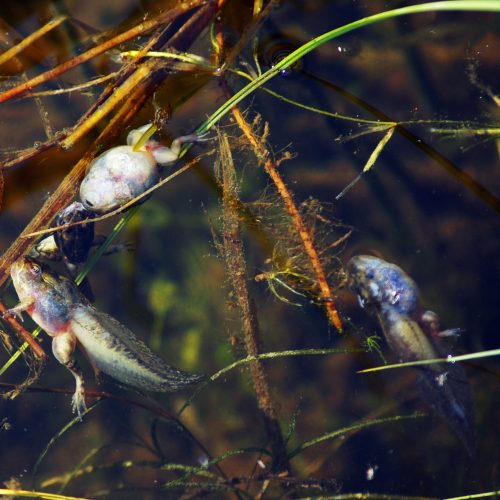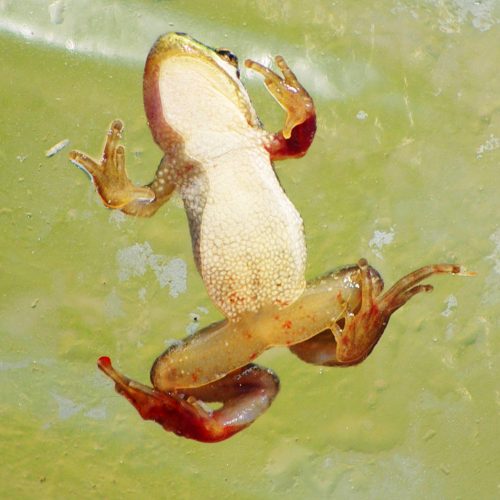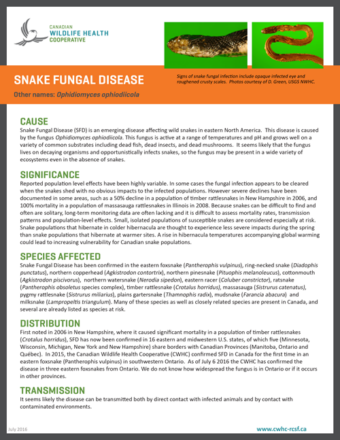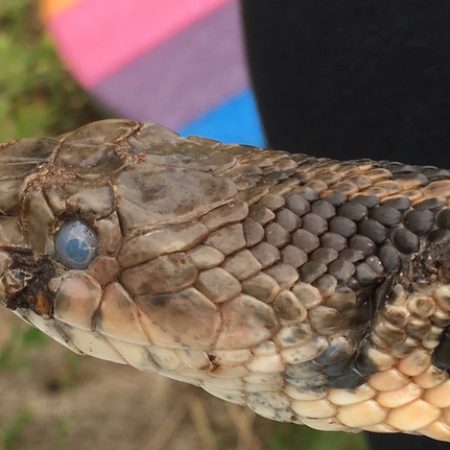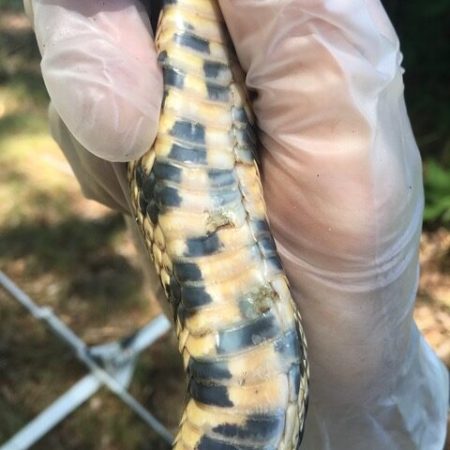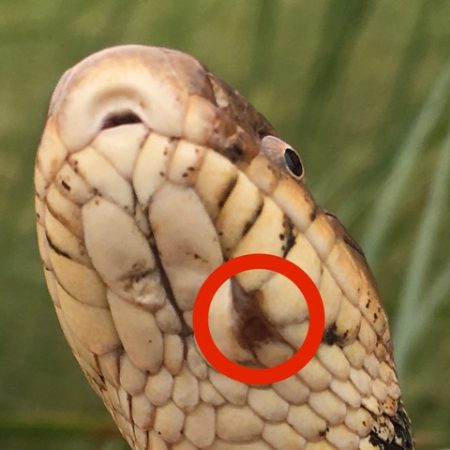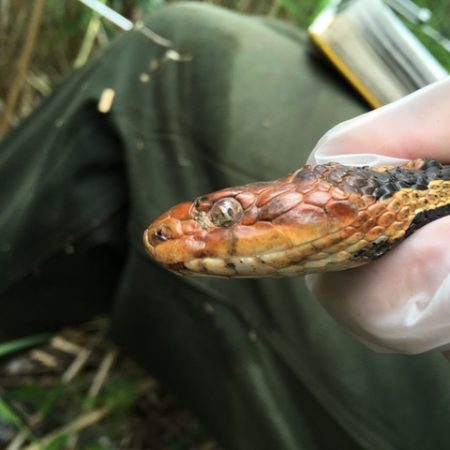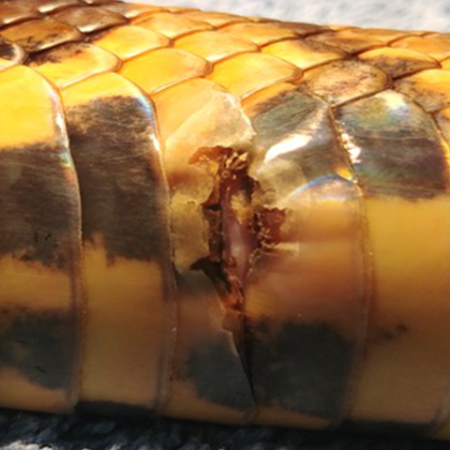Current and Emerging Amphibian & Reptile Diseases
Chytrid Disease
Caused by the fungus Batrachochytrium dendrobatidis (Bd), this disease has driven the decline or complete extinction of over 200 species, mainly frogs, worldwide. The fungus has been detected throughout much of Canada, although disease outbreaks are not known to be common. Bd has aquatic zoospores that infect the skin layer of an animal and can lead to anorexia, lethargy, and excessive skin shedding or thickening, which may prevent breathing, thermoregulation, and nutrient/water intake. American Bullfrogs, which are invasive around the world, appear immune and may be carriers of the fungus. On Vancouver Island, Bd has been detected on about 50% of individual invasive Bullfrogs.
Salamander Chytrid Disease
Additional Resources
Ranaviruses
Ranaviruses are DNA (as opposed to RNA) viruses of the family Iridoviridae that have caused severe infections in a number of ectothermic taxa, including amphibians, reptiles, and fish worldwide. They cause a sudden onset of severe illness with gruesome symptoms (e.g. massive hemorrhaging, fluid accumulation under the skin, and bloating), followed by death within hours or days. Ranavirus infections can cause 90-100% mortality in populations and can affect multiple species at the same time. Ranaviruses have been responsible for disease outbreaks in many areas across Canada. They are transmitted through ingestion of infected organic material, water, and substrates, as well as skin injuries and by blood-feeding parasites like mosquitoes.
Snake Fungal Disease (SFD)
Caused by the fungus Ophidiomyces ophiodiicola, this emerging disease can lead to severe illness and death in snakes. It has been detected in wild snakes throughout northeastern North America, including several locations in southern Ontario. Reported population level effects have been highly variable, but SFD has resulted in up to 100% mortality in small, isolated populations. Signs of snake fungal infection include opaque infected eyes and roughened crusty scales. A proactive approach to preventing the spread of SFD and managing outbreaks is necessary to combat this new threat.


